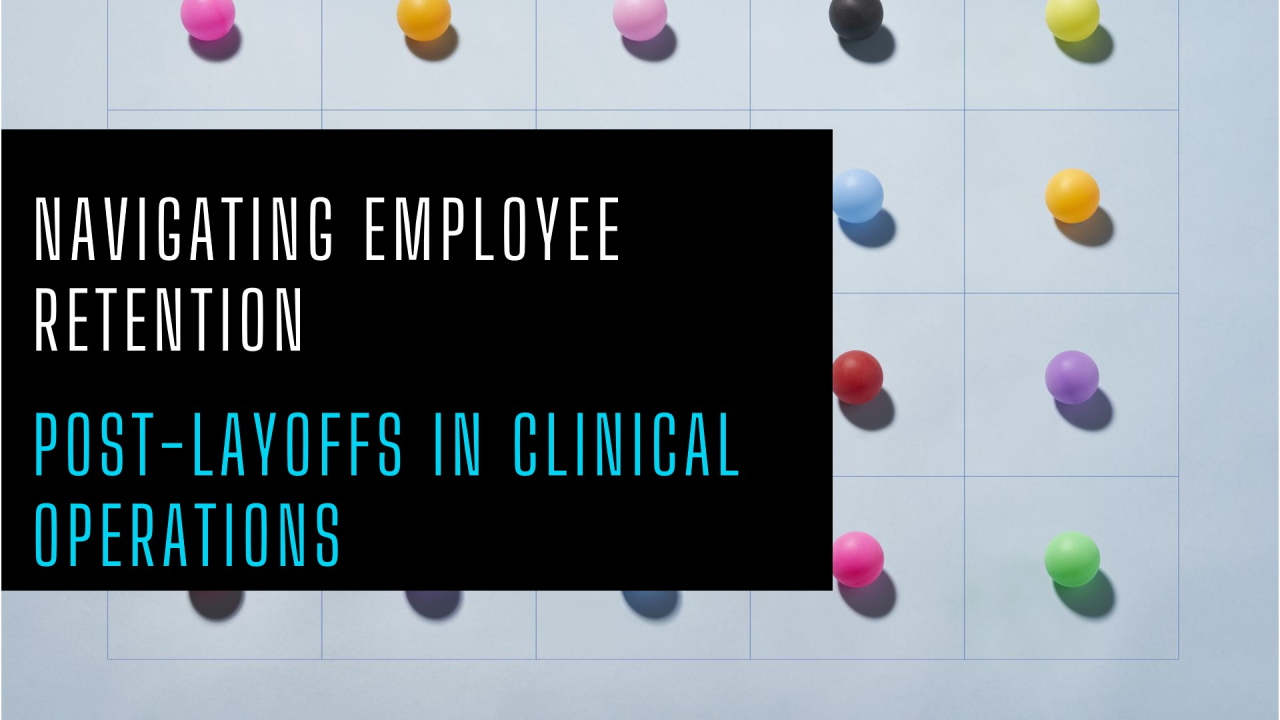
The Next Great Resignation is Brewing: Navigating Employee Retention Post-Layoffs in Clinical Operations
Alex Benjamin
18 Years of Building and Growing High Performing Clinical Research Teams | 1K+ Placements | 85+ Recommendations | 30k 1st & 890k 2nd Pharma/Biotech Connections | Bettering the Lives of Clinical Research Professionals
Preparing for the Inevitable Turnover Surge as the Job Market Rebounds
Summary
The clinical research industry has experienced significant upheaval in recent years due to a combination of the Great Resignation and the more recent wave of layoffs in 2024. As companies face the redistribution of work to fewer employees, burnout is on the rise. In parallel, many laid-off employees have taken temporary, lower-paying roles, further increasing the likelihood of turnover when the job market recovers.
This whitepaper outlines data-driven strategies companies can adopt to retain their current workforce, prepare for a possible turnover surge, and optimize talent resourcing once the industry begins to rebuild. These strategies will help companies avoid losing valuable talent and ensure business continuity through sustainable employee engagement and retention initiatives.
Introduction
The clinical research industry was not immune to the Great Resignation, which saw millions of workers leave their jobs seeking better work conditions, career progression, and compensation. In 2024, the industry's challenges were exacerbated by widespread layoffs, leaving companies with fewer employees to handle the same amount of work, leading to burnout and employee dissatisfaction.
While the current job market is slow, layoffs have forced many employees to accept positions below their pay grade or outside their desired locations. As the industry rebuilds, this pent-up demand for better opportunities will result in significant turnover, leading to operational disruptions and talent shortages.
The State of Clinical Operations Post-Layoffs
Rising Workloads and Burnout
The redistribution of work to fewer employees has led to increased burnout, with studies showing that over 52% of employees report feeling overworked . Burnout is a critical risk factor for turnover, with employees in healthcare and life sciences particularly vulnerable due to the high-pressure nature of the work . This trend is expected to worsen as companies struggle to fill gaps left by layoffs.
Underemployment and Ongoing Job Search
Many laid-off employees took roles that offered lower pay, longer commutes, or reduced responsibilities simply to maintain a paycheck. Research shows that over 37% of these employees continue looking for more suitable opportunities, meaning they are highly likely to leave once the job market improves . This creates a delayed turnover risk that companies must prepare for.
Strategies for Retaining Talent and Preparing for Turnover
1. Enhance Employee Engagement and Well-being Programs
Employees who feel supported are less likely to leave, even during challenging times. By investing in mental health resources, well-being initiatives, and flexible work options, companies can mitigate the risk of burnout and improve employee satisfaction . For instance, companies that offer flexible work arrangements report 30% higher employee retention rates .
Actionable Steps:
2. Provide Career Growth and Learning Opportunities
Employees who see opportunities for career progression are more likely to stay. Companies should invest in upskilling and internal mobility programs that help employees grow their careers, even if immediate promotions aren't available due to budget constraints.
Data Insight: A study by LinkedIn shows that employees are 41% more likely to stay at companies that offer career development opportunities .
Actionable Steps:
领英推荐
3. Conduct Regular Compensation and Benefits Reviews
With many employees working below their previous pay levels, companies must proactively address compensation disparities before they lead to turnover. Regular benchmarking against industry standards can ensure salaries and benefits remain competitive.
Data Insight: According to a report by Willis Towers Watson, 53% of employees cited inadequate pay as the primary reason they left their job post-layoffs .
Actionable Steps:
4. Foster a Strong Company Culture of Support and Trust
A strong organizational culture is one of the most effective ways to retain employees. In times of uncertainty, trust and transparency from leadership can help employees feel secure and valued.
Data Insight: Companies with a culture of transparency see 14% lower turnover rates compared to those that lack clear communication .
Actionable Steps:
5. Build a Contingency Plan for Talent Gaps
Despite best efforts, some turnover is inevitable. To minimize disruptions, companies should have a contingency plan in place to quickly fill critical roles and manage resource gaps.
Data Insight: The average time to fill a vacancy in the clinical research industry is 56 days, making proactive talent planning essential .
Actionable Steps:
6. Leverage Technology for Automation and Efficiency
To reduce the strain on human resources, companies should explore automation and AI tools for tasks like data management, patient recruitment, and risk-based monitoring. These technologies can reduce the manual workload and allow employees to focus on higher-value tasks.
Data Insight: Research by McKinsey shows that automation can increase productivity by 30-40%, particularly in data-heavy industries like clinical research .
Actionable Steps:
Conclusion: Preparing for a Turnover Surge in 2025
As the clinical research industry begins to rebuild post-layoffs, companies will face an inevitable turnover surge driven by burnout, compensation disparities, and pent-up job dissatisfaction. By proactively addressing these challenges with flexible work models, career development opportunities, competitive compensation, and well-being programs, companies can retain their top talent and emerge stronger in the post-layoff landscape.
References: